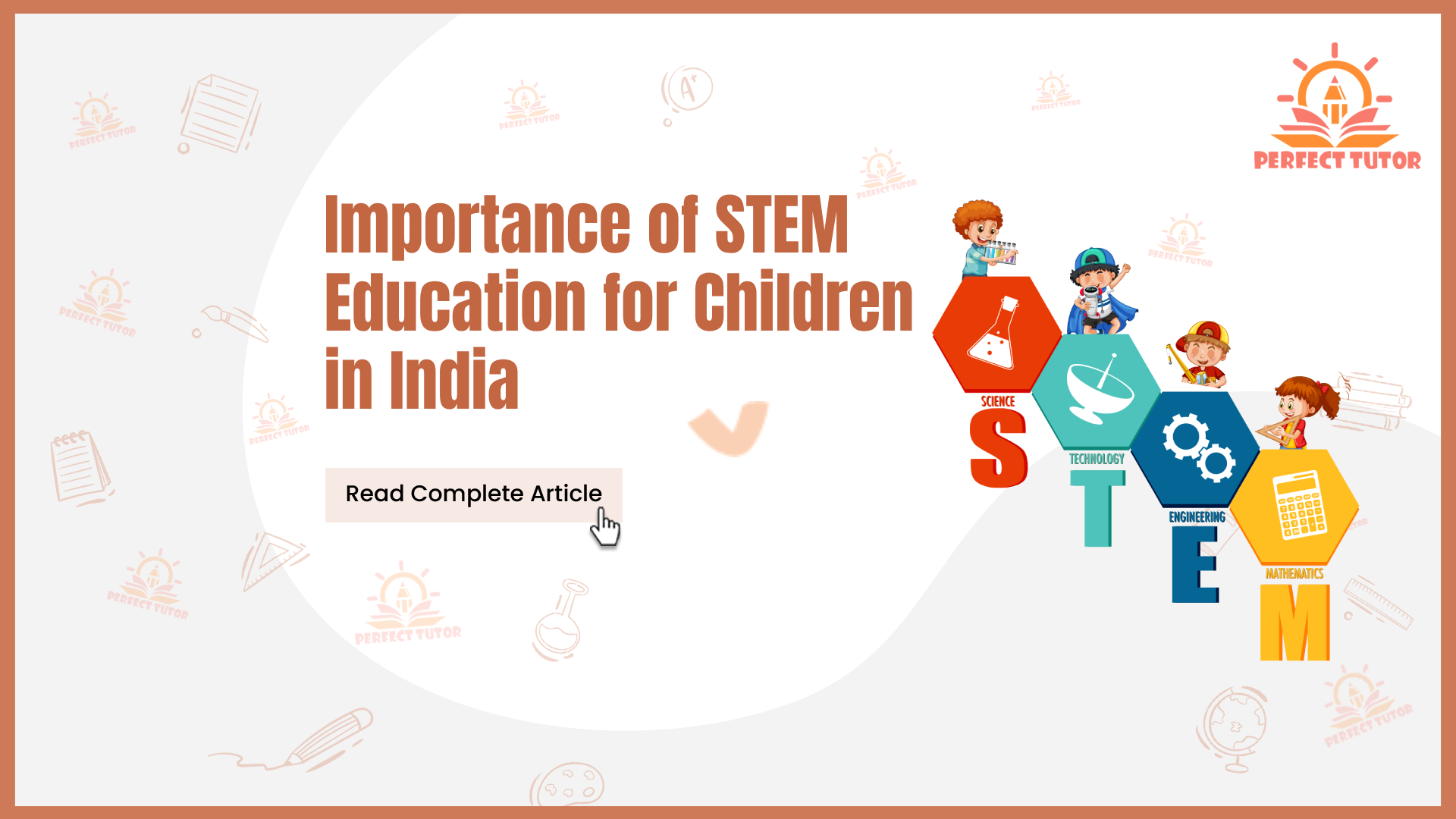Importance of STEM Education for Children in India
When children build a robot, solve a math puzzle, or conduct a science experiment, they’re not just having enjoyable; they’re developing valuable life skills. This kind of learning is what we call STEM education, which stands for Science, Technology, Engineering, and Mathematics. In a fast-developing country like India, giving children access to strong STEM education is no longer optional. It’s necessary.
In this blog, we’ll explore why STEM education matters so much for children in India, the challenges we face, and how parents, teachers, and communities can work together to support it.
What Is STEM Education?
STEM education is not only about learning formulas or writing computer code. It’s about helping children think creatively, solve real problems, and understand how things work. In a STEM classroom, children don’t just sit and listen, they experiment, build, design, and ask questions. Whether it’s making a simple machine, coding a game, or understanding how plants grow, STEM makes learning active and exciting.
Why Is STEM Important for Children in India?
1. Preparing for the Jobs of the Future
India is growing rapidly in areas like technology, health care, artificial intelligence, and data science. Most of the jobs in the future will need skills related to STEM. When children start learning these skills early, they are better prepared for these opportunities.
For example, learning to code at a young age could open doors to becoming a software developer or app creator. Exploring science might lead to careers in medicine or environmental studies. STEM builds a strong foundation for future careers that may not even exist yet.
2. Improving Problem-Solving and Thinking Skills
STEM helps children learn how to analyze problems and think critically. Instead of memorizing facts, they learn how to explore solutions and make decisions based on logic and evidence. These thinking skills are useful in everyday life too,whether it’s fixing a toy, organizing a project, or solving a disagreement.
3. Encouraging Curiosity and Creativity
STEM encourages children to ask questions like “How does this work?” or “What happens if I try this?” This curiosity leads to learning. Children become more creative and confident as they try new ideas and test them. This approach keeps learning fresh and exciting.
4. Building Teamwork and Communication Skills
STEM activities often involve group work. Children learn how to share ideas, listen to others, and work as a team. These skills are important not only in school but also in the workplace and everyday life. Teamwork and communication are just as important as technical knowledge.
5. Making Sense of the World
STEM helps children understand the world around them. They learn why the sky changes color, how smartphones work, or what causes weather changes. With this knowledge, they can become responsible, informed citizens who care about the environment, technology, and society.
Challenges of STEM Education in India
While the benefits are clear, not every child in India has access to quality STEM education. Here are some of the major challenges:
1. Lack of Resources in Schools
Many schools, especially in rural or low-income areas, do not have computers, science labs, or trained teachers. Without proper tools, hands-on learning becomes difficult.
2. Gender Gaps
In some parts of India, girls are discouraged from taking science or technology subjects. This could be due to old traditions, lack of support, or no female role models in these fields.
3. Untrained or Overloaded Teachers
Teachers are at the heart of education. But many of them don’t receive proper training in how to teach STEM in a modern, practical way. They might also be handling too many students with limited support.
4. Unequal Access
Children from different backgrounds, rural areas, poor families, or marginalized communities, often don’t get the same opportunities to learn STEM as others.
How Can We Improve STEM Education in India?
Improving STEM education isn’t something only schools can do. Parents, communities, governments, and private organizations all have a role to play.
1. Hands-On Learning in Every Classroom
Learning by doing is one of the best ways to teach STEM. Schools should include projects, experiments, and games in their teaching. Even simple activities, like building a bridge with straws or growing plants, can teach big lessons.
2. Better Teacher Training
Teachers need help too. Providing regular training, easy-to-use materials, and support can help teachers feel confident about teaching STEM. When teachers are excited about learning, students catch that excitement too.
3. Encourage Girls to Join STEM
We must help girls believe they belong in science and technology. Schools and NGOs can offer scholarships, mentorships, and role models to show girls that they can succeed in STEM fields.
4. Partner with Industries and Organizations
STEM education can get a big boost when schools team up with local companies or colleges. These partnerships can provide students with exposure to real-world applications, internships, or workshops.
5. STEM at Home
STEM learning doesn’t have to stop at school. Parents can help at home by playing logic games, exploring nature, doing simple experiments, or encouraging children to ask questions. There are also many free mobile apps and websites that offer enjoyable STEM activities.
Read This Also - 5 Engaging AI Classroom Activities to Try With Your Students
Programs That Are Making a Difference in India
Several programs and government efforts are already improving STEM education across India:
Atal Tinkering Labs (ATL)
Set up in schools across the country, ATLs provide students with access to tools like 3D printers, robotics kits, and electronics. Children can explore and create their own inventions.
Vigyan Jyoti Program
This program encourages girls to pursue science by offering mentoring, academic support, and career guidance.
Robotics and Coding Clubs
Many private schools and NGOs now run after-school clubs where kids can learn to code, build robots, and solve practical problems using technology.
The Role of Parents and Community
Education doesn’t just happen in schools. Families and communities play a huge role in shaping a child’s future.
Support Learning at Home
Encourage your child to read, explore science videos, or try out learning apps. You don’t need expensive gadgets, even cooking, gardening, or fixing things at home can teach STEM skills.
Ask and Answer Questions Together
If your child asks why the sky is blue or how a fan works, take it as a learning opportunity. Find the answers together.
Celebrate Curiosity and Effort
Don’t just praise good grades. Praise effort, ideas, and creativity. Show children that it’s okay to make mistakes and try again.
Looking Ahead: STEM for a Better Future
India’s future depends on how well we prepare our children today. STEM education gives kids the tools to think smart, adapt fast, and create new ideas. Whether it's solving climate change, improving health care, or building smarter cities, tomorrow’s challenges will be solved by the young minds we nurture today.
Final Thoughts
STEM education is not just about preparing children for science or tech careers, it’s about helping them understand the world, think clearly, and become active problem-solvers. In a growing country like India, where technology is part of everything we do, it’s more important than ever to make sure every child has a chance to learn and succeed through STEM.
By working together, schools, parents, governments, and communities, we can make STEM education a powerful, life-changing experience for all Indian children.



 +91 8700847275
+91 8700847275
 +1 8009616567
+1 8009616567